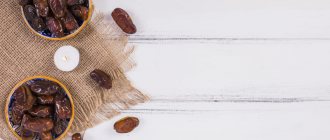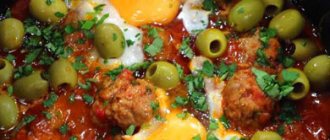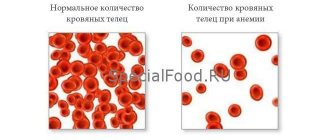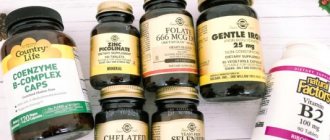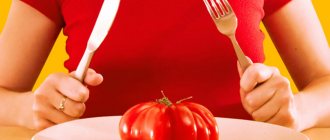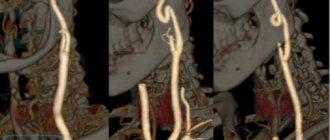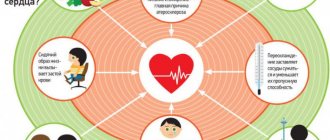Reduced hemoglobin comprehensively worsens the condition of the body, since in this case all organs and tissues experience oxygen starvation.
And this is complemented by an increased load on the cardiovascular system - the body simply accelerates blood flow to increase the flow of oxygen.
Hemoglobin deficiency and anemia are especially dangerous in preschool children - this often provokes the development of pathologies of the nervous system, which ultimately leads to mental retardation.
According to numerous studies , hemoglobin levels can be regulated by diet, including or excluding iron-containing foods from the diet.
We have compiled a rating of the 20 most effective foods that should be included in your diet to increase the concentration of hemoglobin in the blood. We will also describe general principles of nutrition and recommendations from doctors.
Let's remember that in the last article we looked at 7 products that reduce hemoglobin levels.
Factors influencing hemoglobin
The main hemoglobin is iron. It is through the process of its oxidation and reduction that oxygen is transported and absorbed in the tissues of a living organism.
Iron deficiency is one of the most common causes of a sharp decrease in hemoglobin levels.
However, simply including iron-rich foods in your diet is not enough. This microelement cannot be fully absorbed without certain factors. For example, to break it down into derivative atoms (which then react with certain groups of proteins), vitamin C, B vitamins (especially folic acid), omega-3 and omega-6 unsaturated fatty acids are needed.
At the same time, there are a number of factors that reduce the bioavailability of iron. For example, a high level of calcium in the body inhibits the production of new hemoglobin molecules. If there is a deficiency of the above microelements, iron simply will not be absorbed.
It is also worth considering that a decrease in hemoglobin levels can be provoked by a whole range of diseases of the cardiovascular system and gastrointestinal tract. That is why you should not delay going to the doctor - it is better to immediately establish the cause of hemoglobin deficiency and eliminate this particular factor.
If a low hemoglobin level is caused by a deficiency of micronutrients, then it is recommended to include the following foods in the diet:
- rich in iron;
- rich in vitamins C, E, B-group;
- rich in amino acids (preferably of animal origin);
- exclude those foods that reduce the bioavailability of iron.
In most cases, the above list of recommendations will be enough to normalize the composition of formed elements in the blood.
Top foods containing iron
Women should consume at least 18 mg of iron per day, men - 10 mg. The list of products that naturally increase the concentration of hemoglobin in the blood has long been compiled.
The leaders in iron content are the following products (per 100 g):
- Pork liver 20.2 mg;
- Chicken liver 17 mg;
- Dark chocolate 12 mg;
- Oysters 9.2 mg;
- Pumpkin seeds 9 mg;
- Beef liver 7 mg;
- Beef heart 4.8 mg;
- Pork heart 4.1 mg;
- Beef meat 3.6 mg;
- Lamb meat 3.1 mg;
- Pork meat 1.8 mg;
- Chicken meat 1.6 mg;
- Turkey meat 1.4 mg;
- Mussels 6.7 mg;
- Sardines 2.9 mg;
- Chicken yolk 6.7 mg;
- Quail yolk 3.2 mg;
- Beef tongue 4.1 mg;
- Pork tongue 3.2 mg;
You should also include in your diet:
- Pistachios 60 mg;
- Spinach 13.51 mg;
- Lentils 11.8 mg;
- Peas 6.8-9.4 mg;
- Buckwheat 8.3 mg;
- Barley 7.4 mg;
- Oatmeal 5.5 mg;
- Wheat 5.4 mg;
- Peanut 5 mg;
- Dogwood 4.1 mg;
- Cashew 3.8 mg;
- Corn 3.7 mg;
- Pine nuts 3 mg.
The list indicates the amount of iron that is present in 100 grams of the product.
List of 20 products to increase it
The body must receive all micronutrients in sufficient quantities, including minerals, vitamins, and metals. All these elements directly or indirectly affect the hematopoietic function, which needs to be stimulated (hemoglobin is produced in the bone marrow, like red blood cells, platelets, and leukocytes). So, here is a list of the 20 most effective products.
Liver
Any liver is useful for hemoglobin. Beef, chicken, pork will do. Moreover, it is particularly rare (rare), since in this case most of the micronutrients are preserved.
The liver contains B-group vitamins, iron (6.9 mg per 100 grams), and iodine - all this helps to increase hemoglobin levels.
Meat
The basis of any meat is a wide range of proteins and essential amino acids, which react with iron, thereby forming hemoglobin molecules.
More effective types of meat in this regard are rabbit, pork, and beef. But, again, the meat should be subjected to minimal heat treatment, ideally steamed.
Buckwheat
Almost all grains reduce the bioavailability of iron. The only exception is buckwheat, which acts exactly the opposite.
In addition, buckwheat also contains iron (almost 7 mg per 100 grams of kernels). That is why it is recommended to use it primarily as complementary food for infants, and not semolina (which contains calcium and, thereby, slows down the production of hemoglobin).
Halva
Halva contains a large amount of iron - almost 30 mg per 100 grams of product (and tahini contains even more - up to 50 mg per 100 grams). That is, 50 grams of such dessert provide the daily requirement of iron in the body.
But it’s worth considering that there are practically no B vitamins and ascorbic acid in halva. Therefore, if you include it in the diet, then take care of a sufficient standard of other micronutrients that promote the absorption of iron.
Beet
Contains iron, amino acids, and vitamins that help increase hemoglobin. The peculiarity of table beets is that all micronutrients are retained even during heat treatment.
You can also include beetroot juice in your diet, but you should drink it diluted (1 part juice to 2 parts water).
Pomegranate
Of all the fruits, pomegranate is considered the most beneficial for hemoglobin due to its high content of vitamin B6 .
There is also iron in pomegranate seeds, but in small quantities - only 1 - 1.5 milligrams per 100 grams.
Carrot
To raise hemoglobin, it is better to choose red carrots - they contain the most beta-carotene and vitamin A.
And these microelements help accelerate biochemical reactions using calcium - reducing its “free” level in the blood increases the bioavailability of iron (carrots contain only 0.5 - 0.7 mg per 100 grams).
Dried fruits
The best dried fruits to eat are prunes, raisins, apricots, cherries, cherries, bananas - they contain B vitamins, E, C.
The fact that dried fruits contain a large amount of plant fiber also helps speed up the absorption of iron - this comprehensively normalizes the functioning of the gastrointestinal tract.
Nuts
Walnuts, as well as pistachios, contain a considerable amount of omega-3 and omega-6 unsaturated fatty acids, which accelerate a whole complex of intercellular metabolic processes, including those with iron.
Nuts are considered the most beneficial for young children - they reduce the likelihood of developing pathologies of the nervous system by almost 2 times.
But you should avoid peanuts. It is extremely high in fat, which creates a high load on the gastrointestinal tract and also slows down the absorption of iron.
See 7 nuts that are good for your blood in a separate article.
Fish roe
Both red, black, and yellow caviar are very useful in this regard, as they contain iron (from 6 to 12 mg per 100 grams), as well as omega-3 unsaturated fatty acids. Literally 100 grams of this product per day completely provides the body with all the necessary micronutrients to normalize hemoglobin levels.
And most importantly, this product is easily digestible, so it can be included in the diet if you have chronic diseases of the gastrointestinal tract (when meat or liver are contraindicated).
Honey
The main benefit of honey is that it contains a huge range of minerals (including rare ones that cannot be obtained from other foods), which has a positive effect on the water-salt balance . And this is also an important point in normalizing hemoglobin levels.
This will also help get rid of edema, which often occurs when the load on the cardiovascular system increases (which will certainly happen with a hemoglobin deficiency).
Nutritionists indicate that you need to eat buckwheat or honeydew honey to achieve the desired effect - they have the highest concentration of minerals.
Nettle
Contains a small amount of iron, as well as vitamin B12, which increases its bioavailability for the body .
Doctors recommend including nettle in the diet as a spice (dried) during pregnancy and breastfeeding.
But it is worth remembering that it also stimulates the secretion of gastric juice, which in case of gastritis or peptic ulcer of the stomach and/or duodenum can aggravate the patient’s condition.
Eggs
To increase hemoglobin, you should consume egg yolks - they contain up to 8 mg per 100 grams of iron. And it is better to eat them fresh or soft-boiled.
Fresh chicken eggs can be a source of salmonellosis. But quails also contain iron, but their shells have smaller pores through which infection does not penetrate. Therefore, they are considered safer and are recommended for children to include in their diet.
Fish
Sea fish is rich in omega-3 unsaturated fatty acids. And the fattier it is, the more fatty acids it contains. River fishing is also useful in this regard; carp (mirror), pike and perch are better suited. And among the marine varieties of fish - tuna and salmon.
By the way, eating seaweed is no less useful. It contains iodine, which normalizes the functioning of the endocrine system (which indirectly regulates the production of hemoglobin).
Chocolate
Cocoa powder contains up to 12 mg of iron per 100 grams (depending on the variety and variety). Nutritionists say that you should eat natural dark chocolate. Less useful are milky, white, pink.
And it is advisable to prepare chocolate yourself at home without adding butter (as it reduces the bioavailability of iron).
Chocolate also stimulates metabolic processes between cells by stimulating the production of endorphins. But you should not abuse this property, since the body tends to increase the need for the same serotonin. That is, over time, addiction and a kind of dependence develop.
Rose hip
Among berries, rose hips are the largest source of ascorbic acid, which is used in biochemical processes involving iron.
It is better to consume rose hips in the form of a decoction (50 grams of fresh or dried berries per 300 milliliters of boiling water) or jelly.
Although rose hips contain a large amount of vitamin C, it does not irritate the mucous membrane of the stomach and esophagus, so these berries can be included in the diet for chronic diseases of the gastrointestinal tract.
Currant
Contains slightly less ascorbic acid than rose hips. It is better to use black currants - they contain less tannin than red ones (tannin is a tannin and slows down the production of hemoglobin).
No less useful are currant leaves, from which you can prepare aromatic and tasty tea. Its use is also an excellent prevention of immunodeficiency.
Strawberry
Strawberries are rich in vitamin C and also contain a small amount of iron (from 0.2 to 1 mg per 100 grams, depending on the variety and growing method).
Just eat whole strawberries either with sugar or honey, but not with sour cream, yogurt or cream.
Turmeric
Of the spices, turmeric contains the most iron - about 35-50 mg per 100 grams. And most importantly, it is great for preparing almost any dish, even some desserts.
During pregnancy, turmeric should not be abused, as it can provoke smooth muscle spasms. In critical cases, this will even lead to premature birth. Doctors in most cases warn about this.
Parsley
Of the iron-containing greens, parsley is the healthiest. But it should be consumed fresh, so it is better to add it to salads rather than to soups. Contains about 2 mg of iron per 100 grams.
Parsley root is no less useful. It is also used as a spice.
Also check out the product table:
What the experts said
Stanislav Skakun, founder of the health data processing service Biodata, spoke on the topic “Practical biohacking: a system for collecting data about yourself.” As a participant in the large-scale quantified self experiment, he spoke about biohacking based on the data obtained.
The optimization of mitochondrial function was discussed in the report of biogerontologist and biohacker Denis Varvanets. He discussed the importance of monitoring the index of maximum oxygen consumption (MOC).
Of particular interest was the speech of the speaker from the Netherlands – cyborg biohacker Patrick Powman. He talked about wearable devices and implants, and looked at what types they come in. The speaker implanted 31 implants, 11 biomagnets, 15 RFID transponders and 5 RFID LEDs.
Topic: “Sleep biohacking. Gadgets and applications for monitoring and improving sleep” was revealed by the President of the Russian Society of Somnologists, Honored Doctor of the Russian Federation Roman Buzunov. He identified the important functions of sleep, including ontogenesis, physical recovery, and the formation of long-term memory.
Guests learned about how genetic testing can help maintain and improve health thanks to the report of Artem Elmuratov, co-founder and member of the board of directors of Genotek. He described the mechanism of manifestation of hereditary diseases.
Also speaking at the conference were:
- certified face fitness trainer Elena Fedotova;
- founder of the prevent-age resort “First Line” Maria Grudina;
- candidate of medical sciences and therapist Yaroslav Ashikhmin;
- Doctor of Medical Sciences Kirill Proshchaev;
- nutritionist Anna Melekhina;
- Candidate of Biological Sciences, Skolkovo expert Vadim Zorin;
- founder of the Russian Institute of Biohacking and Health Nikita Metelitsa;
- bioentrepreneur Alexey Strygin;
- founder of the Center for Health Technologies Igor Berlinsky;
- clinical psychologist Yulia Aksenova;
- Candidate of Biological Sciences Dmitry Krivosheev;
- co-founder and managing partner of the Health Buddy project Anton Merkulov;
- psychotherapist Maxim Goncharov.
In their reports, they talked about biohacking as a tool for preventive medicine, genetic modification of the body, the effect of stress on health, the prevention of premature aging and much more.
General nutrition rules
To raise hemoglobin more quickly and effectively, nutritionists recommend following the following tips:
- Keep small meals. You need to eat in small portions, but as often as possible. Optimally – at least 6 times a day.
- Avoid cereals (except buckwheat) and fermented milk products - they all slow down the absorption of iron and interfere with the production of formed elements and hemoglobin.
- Walk in the fresh air as often as possible - a sufficient balance of oxygen in the blood also indirectly stimulates the renewal of hemoglobin molecules and prevents the oxidation and destruction of red blood cells. Ideally, take walks in the fresh air after each meal (this will also help significantly speed up your metabolism).
- Avoid tea and coffee. It is better to give preference to herbal teas, as well as homemade compotes, fruit and vegetable juices.
- Do not eat 2-3 hours before your planned bedtime. Metabolic processes during sleep slow down significantly, so iron and vitamins are practically not absorbed during this period (but the load on the gastric mucosa increases, since the utilization of gastric juice slows down).
What vegetables increase hemoglobin?
Beetroot helps to cope most effectively with iron deficiency; it is useful in raw or boiled form. This product ensures the regeneration of iron content, “starts up” red blood cells, and enriches the blood with oxygen. Other vegetables will help increase hemoglobin.
- Carrot. The product is consumed fresh, can be added to salads, and can be boiled.
- Tomato. The vegetable improves blood composition, saturates it with essential elements, and prevents the formation of blood clots. Tomatoes do not lose valuable qualities after heat treatment.
- Potato. The vegetable is saturated not only with iron, but also with other useful elements - calcium, phosphorus, potassium, magnesium, vitamins and organic acids. It is included in the menu boiled.
- Zucchini. The product is rich in iron, potassium and magnesium. The vitamin C content helps in the absorption of iron.
All of these vegetables strengthen the body, restore the functioning of the intestines, which makes the fight against low hemoglobin more effective.
Features of the diet for certain groups of patients
The nutritional rules for low hemoglobin are somewhat different for different groups of patients. Nutritionists indicate:
- Adults. The iron requirement for adults is about 12 mg per day. It is much easier for adults to digest meat products and animal by-products (liver, lungs, kidneys, heart). It is recommended to include them in the diet daily, at least in minimal quantities.
- Children. The iron requirement for children is from 8 to 11 milligrams per day. Preference should be given to plant products. But you should not overuse milk, especially fatty milk, as it radically reduces the level of hemoglobin and slows down the absorption of iron. It is also recommended to include buckwheat, fish, a small amount of chocolate and halva in the diet.
- Pregnant women. The iron requirement in pregnant women is the highest and reaches 20 mg per day. As a rule, to normalize hemoglobin, they are prescribed specialized vitamin complexes. It is also recommended to eat fish, red caviar, and carrots. But it is better to avoid turmeric, parsley and most other spices that stimulate smooth muscle spasms. The doctor with whom the woman registers must talk about all this in detail.
- Elderly. Their need for iron is the smallest - only 6 - 8 mg per day, which is explained by the natural slowdown in the functionality of the cardiovascular system and bone marrow. Doctors also recommend that older people consume fish, chicken fillet (breast, since there is practically no fat in it), as well as pomegranate and beet juice.
What fruits increase hemoglobin?
Modern research has found that the first fruit in the fight against iron deficiency is the fresh peach. 4 mg are present in 100 g of fresh product, in dried - about 3 mg. The following fruits are also relevant.
- Quince. Adding 100 g to the menu provides 3 mg of iron.
- Persimmon. Eating 100 g of fruit “gives” the body 2.5 mg of iron.
- Pear. In addition to iron (2.3 mg), the fruit is rich in zinc, manganese, cobalt, copper, and is effective in treating anemia.
- Apple. For a long time it was considered the number one fruit in the list of fruits that increase the concentration of hemoglobin in the body. When fresh, 100 g of apples contain 2.2 mg. The indicators of dried fruits look better - approximately 2.7 times more.
- Pomegranate. By eating 100 g of the product, you can replenish iron reserves by 1 mg. It is also good for its abundance of valuable vitamins.
- Apricot. It is best consumed in dried form, the concentration of essential elements increases. The fresh product is also useful - 0.7 mg. In addition to iron, apricots contain cobalt, manganese, and copper. All these elements together are useful for anemia and activate hemoglobin biosynthesis.
- Kiwi (0.8 mg) and fresh plums (0.5 mg) will be beneficial for the body.
- Watermelon is famous for its high concentration of iron; its consumption can enrich the body with other valuable substances - potassium, vitamins. Not only is the hemoglobin level restored, but also energy increases, and the person gets rid of chronic weakness.
Iron absorption is a process that occurs in the proximal intestine. There are certain foods that contain phytates and phosphates that inhibit it. The solution to the problem will be to include in the menu fruits that activate the absorption of iron and are endowed with vitamin C. The most beneficial will be all citrus fruits, melon, pineapple, and sour apples.
Folk remedies and vitamin complexes
If the inclusion of the above products in the diet does not bring the desired effect, then you can use folk remedies to increase hemoglobin levels. Many of them are extremely effective and are recommended for use even by doctors. The most popular of these methods:
- Dandelion root decoction. Helps normalize the biochemical composition of the blood and accelerate the removal of toxins. To prepare, mix 30 grams of grated fresh dandelion roots with 2 cups of boiling water. Leave for at least 2 hours (until completely cooled). Take 1 teaspoon, diluting it in a glass of water with honey. Take 2 times a day.
- Infusion of rosehip and honey. To prepare, mix 10 grams of dry grated rose hips, 2 tablespoons of honey and a glass of boiling water. Infuse for 30-40 minutes, take as tea 2 times a day. The course is no more than 2 weeks (if longer, there may be excess iron in the body, which also negatively affects health).
- Infusion of St. John's wort, blackberry leaves and chamomile. Mix 1 teaspoon of dry herbal base, add 300 milliliters of water and leave for 2 hours. Take 50 milliliters 3 times a day until hemoglobin levels normalize (but not more than 4 weeks).
If traditional methods of treatment do not bring the desired effect, then drug therapy is prescribed. As a rule, these are multivitamin complexes with a high content of iron, B vitamins, and ascorbic acid. But calcium in such preparations is either completely absent or contained in very small quantities. Popular vitamin complexes of this group:
- Decamevit;
- Aevit;
- Complivit;
- Doppel-Hertz (with iron).
Just check with your doctor for the recommended dosage, as well as the duration of the course of treatment.
Subtleties of increasing hemoglobin
Iron-rich foods are the best way to combat low hemoglobin.
Pomegranate fruits, which have “deposits” of iron, effectively help increase the level of this iron-containing complex protein. The juice made from them is also useful.
Red grape wine is an effective assistant in increasing hemoglobin. However, this drink is prohibited for expectant mothers.
Even a diet menu based on the use of iron-containing dishes does not guarantee success. The production of hemoglobin that occurs in the body depends not only on this substance. You also need to take care of your copper intake.
Pear is a fruit that speeds up the process of restoring healthy levels of iron-containing protein. It is often recommended by doctors for patients suffering from anemia, especially if iron supplements do not produce results.
Honey not only improves the situation with hemoglobin, but also has a restorative effect on the body. It is recommended to eat about 50-70 g of healthy sweets every day.
The absorption of iron will become better if you include foods rich in vitamin C. The best effect is provided by freshly squeezed fruit drinks and citrus fruits. Buckwheat contains folic acid, which activates the process of hematopoiesis. Bananas are recognized as a supplier of vitamin B6, without which hemoglobin cannot be normalized.
There are also a number of long-acting drugs:
- heferol;
- ferrogrademet;
- ferrograd;
- irovit;
- sorbifer durules;
- fefol;
- Tardiferon-retard.
Drugs that are effective for a short period of time are ferrous gluconate, ferrous fumarate, ferrous sulfate.
Traditional medicine offers its own methods of combating low hemoglobin.
The following recipes will be useful:
- Raisins, prunes, dried apricots and walnuts are taken in equal quantities and mixed thoroughly. The resulting mixture is processed using a meat grinder and supplemented with a small amount of honey. Every day you need to consume this sweet dish in the amount of 6 tablespoons.
- Freshly squeezed carrot juice is effective in increasing hemoglobin; 300-400 ml per day will benefit the body. Beetroot juice is mixed with honey in equal proportions, the mixture is consumed in the amount of 2 tablespoons three times a day.
- Red clover helps normalize the substance. 4 heads of the plant are dissolved in boiling water and infused for half an hour. Treatment lasts for a month, the mixture is consumed half a glass three times a day, preferably taken before meals.
- “Compote” made from fresh juices mixed in equal (100 g) parts effectively helps increase hemoglobin. Necessary juices: apple, carrot, beetroot, pomegranate. You should add 50 g of honey, consume 2 spoons three times a day.
- Blue blackberry (2 parts leaves), mixed with white clasp grass (2 parts), St. John's wort grass (3 parts). Take a tablespoon of the resulting composition and pour it with a glass of boiled water. Infuse the mixture for three hours, take a spoon three times a day for 30 days.
Which berries increase hemoglobin?
Berries will also help improve hemoglobin levels when levels are low. You should definitely eat cranberries and black currants; the products are healthy not only fresh, but also frozen. Cranberries can be mixed with sugar. Strawberries, strawberries and blueberries are also recommended for iron deficiency.
A berry that is useful for anemia and anemia is rowan. To achieve the effect, you must eat at least a tablespoon daily.
Which nuts increase hemoglobin?
Of the nuts that are used in the fight against low hemoglobin, walnuts are the most useful. The product contains iron, potassium, magnesium, cobalt, and a large number of vitamins. This composition allows it to stimulate the process of synthesis of the necessary substance and have a strengthening effect on a weakened body.
Eating nuts in combination with raisins is beneficial for hemoglobin. Half a glass of raisins is soaked in water for 2 hours. Then the water is drained, the raisins are mixed with walnuts (20 g is enough). The dish is divided into three servings, the approximate volume of each serving is a couple of tablespoons.
You can also try a combination of nuts with cranberries and honey. All these elements are mixed using a blender.
Meat products and blood composition
Meat contains a fairly large amount of iron. At the same time, it contains essential amino acids and B-group vitamins - all this increases the bioavailability of iron , that is, it helps the body absorb it and synthesize hemoglobin.
Some products of plant origin contain even more of this element, but due to the lack of amino acids (proteins), only a small part of the iron from them is ultimately absorbed.
For example, pork liver contains about 19 milligrams of iron per 100 grams, of which about 80% is absorbed. And dried porcini mushrooms contain as much as 35 milligrams of iron per 100 grams, but only 30% of them are absorbed.
Diet rules to increase its level
You should take the most responsible approach to planning your own diet.
Firstly , you should exclude fast food and the consumption of so-called junk food, unhealthy food with a high fat content, the presence of preservatives and flavor enhancers, which can cause diabetes.
This food is not only harmful and interferes with weight loss, but also dulls the taste buds, making them immune to the taste of natural food.
Secondly , it is worth planning your meals for at least one week. It is necessary to plan in such a way that over the course of 7 days the body systematically receives all the substances it needs, vitamins, minerals, trace elements, etc.
Vitamins and minerals can be taken additionally in dosage form , but the degree of their absorption even among specialists raises serious suspicions. All the same substances can be obtained from food if you approach the issue properly. In addition, it is necessary to establish a diet regimen: you need to eat food every day at the same time, in different portions and taking into account the body’s need for various substances during the day.
It is recommended to coordinate the diet with the supervising general practitioner, nutritionist or dietician.
It is also necessary to avoid consuming foods that cause allergic reactions.
Who should not consume milk
Among people there are those for whom drinking milk is contraindicated for a number of reasons. A common cause is lactose intolerance, or rather lactose intolerance. It is transmitted genetically and is characterized by the inability to digest lactose, which is rich in all dairy products. There are allergies to proteins contained inside - determined by measuring IgE antibodies.
Attention! With goat's milk things are a little different. People become intolerant to this drink not at the chemical level, but rather due to the specific smell and taste.
The sweetness of the drink is influenced by the herbs that the animal eats, and the taste is influenced by the care taken in caring for the camp and the herd. Doctors prohibit those with thick blood from drinking goat milk, because its consumption increases the presence of coloring proteins in the blood.
How to increase hemoglobin at home: list of products
For a patient who has low hemoglobin, therapists and specialists begin treatment with recommendations on diet and nutrition.
One of the reasons why anemia develops, according to WebMD, is poor diet. A lack of folic and ascorbic acid and vitamin B12 leads to disruption of hematopoietic processes, so the problem of hemoglobin deficiency arises.
The constituent components of the hemoglobin molecule are protein and iron. Deficiency of iron and auxiliary vitamins (B9 and B12, C) disrupt hemoglobin synthesis and provoke the development of anemia.
Therefore, good nutrition is very important for the health and normal functioning of all systems of the human body. However, more and more often, doctors are faced with the fact that it is violations in the diet that cause anemia.
The answer to the question of how to increase hemoglobin is to review your diet. This will help ensure that enough iron, vitamins and nutrients enter the bloodstream for hemoglobin synthesis. But there are nuances here too.
How to quickly increase hemoglobin if a person, for example, is a vegetarian or vegan? It is more difficult when a pregnant or breastfeeding woman adheres to such nutritional principles.
The following products will stimulate the production of hemoglobin in the blood:
Buckwheat
If buckwheat is boring, then try new ways of preparing it. Do:
- Buckwheat-kefir smoothie: pour kefir over the grains crushed in a coffee grinder (100 g). After 8-12 hours you can use it as breakfast or dinner. Supplement the composition with dried fruits to taste.
- Steamed buckwheat porridge: pour one part of the cereal with two parts of boiling water. Cook in a jar with a lid. Wrap the container in a warm blanket or blanket and leave overnight.
- Buckwheat with honey and nuts: for 1 cup of cereal, use 1/2 cup of walnuts. Grind in a blender or coffee grinder and season with 4 tbsp. l. honey Eat 1 tbsp. l. before eating.
Dried fruits and nuts
How to quickly increase hemoglobin so that it is tasty, nutritious and healthy? Dried fruits (prunes, dried apricots, figs, raisins), walnuts or Brazil nuts, as well as fresh lemon will come to the rescue.
Take 200 g of all ingredients, grind in a food processor or meat grinder, season with 5-6 tbsp. l. honey Therapeutic dose - 1 tbsp. l. on an empty stomach in the morning. This remedy is an addition to the main treatment.
Anemia: Human body. Encyclopedia of medicine. – M.: DeAgostini, 2021.
Fresh fruits
Did the test show low hemoglobin? How to raise it without pills and potions? The best way is to diversify your diet with fresh vegetables and fruits. Choose fruits that are rich in vitamin C. These include:
- berries - strawberries, wild strawberries, black currants, blueberries, blueberries, green grapes, cherries;
- fruits - apricot, peach, persimmon, kiwi, apples (green), pomegranate.
Fresh vegetables
Still haven’t figured out how to increase hemoglobin at home? A natural source of cobalamin (B12), folic and ascorbic acids are green vegetables:
- spinach;
- chilli;
- cauliflower and Brussels sprouts;
- broccoli;
- bell pepper;
- young asparagus.
Make salads from beets, carrots, tomatoes and add the listed vegetables.
Sports loads: Stuklov N., Kozinets G. Hemoglobin and sport. —M.: Practical Medicine, 2009.
Cow's milk and hemoglobin
Since childhood, everyone knows the common truth - cow's milk is rich in calcium. It helps in strengthening and restoring bones and tooth enamel. The drink contains vitamin D. It is good for bones, its consumption is a prevention against rickets, especially in children at an early age.
Attention! Vitamin D is necessary for the normal absorption of other nutrients: potassium or calcium.
What's the harm?
Calcium inhibits iron absorption. For anemic patients, cow's milk, which contains a high percentage of calcium, is more harmful by interfering with the absorption of iron. It is difficult for infants who are transferred from mother's milk to cow's milk to replenish iron reserves.
Peculiarities:
- The digestibility of iron in cow's milk is two times lower than the total content of this element.
- To neutralize the negative effects of switching from mother's milk to cow's milk, parents are advised to give their children complementary foods in the form of boiled lean meat.
But it can be added to the diet only if the child has already reached six months of age.


